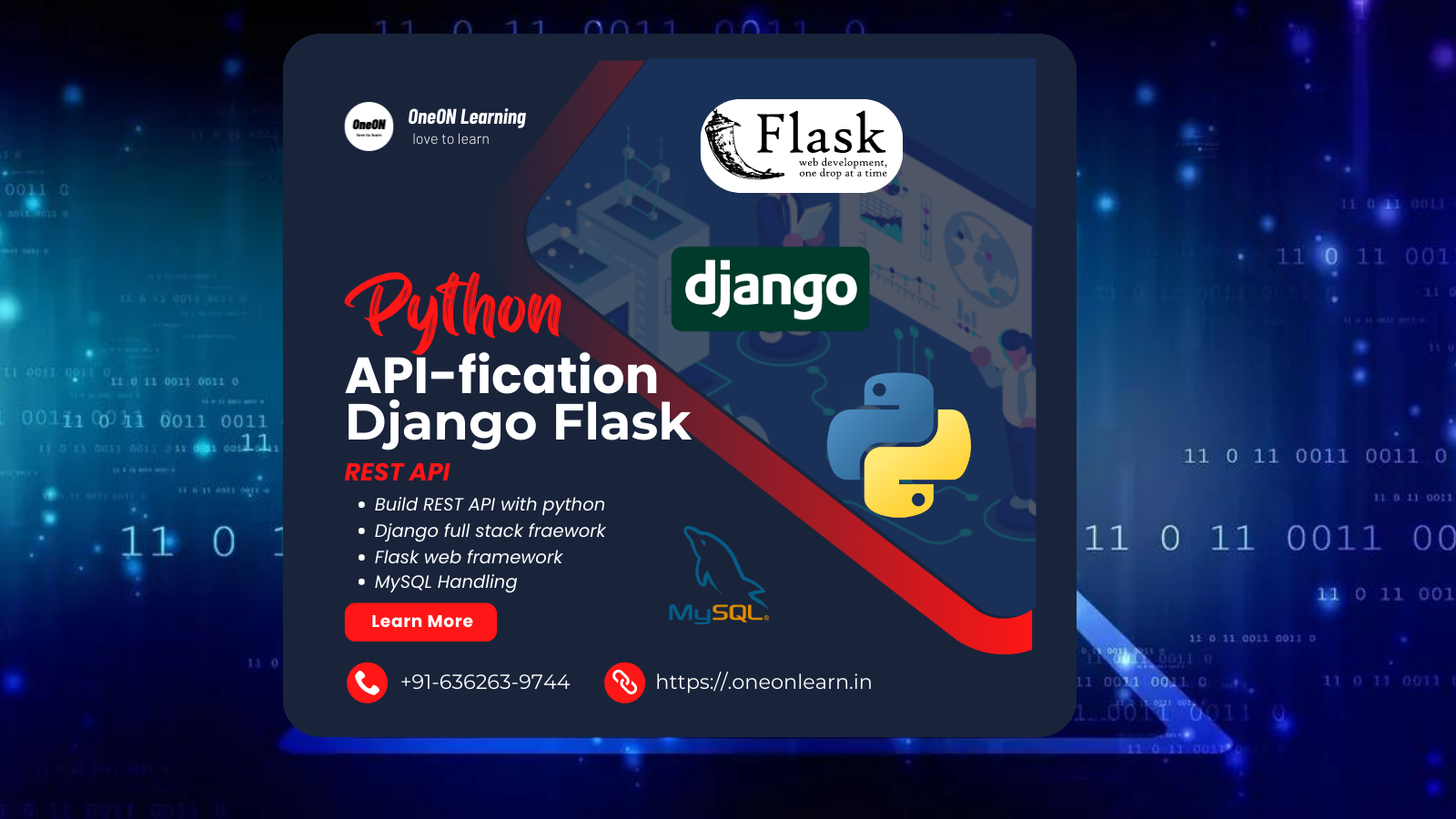Deep Das
Blog entry by Deep Das

Python RESTful API
RESTful API is an architectural style for building web services that are easy to maintain and scalable. Python provides several libraries for working with RESTful APIs, including Flask and Django123.
Python RESTful API MySQL handling
To handle MySQL database in Python RESTful API, you can use Flask and MySQL modules. Flask is a web framework while MySQL module is required to establish a connection with the MySQL database and query the database using Python programming language12.
Python provides several libraries for working with MySQL databases. One of the most popular libraries is the MySQL Connector library, which allows you to connect to a MySQL database and execute SQL queries using Python12.
Django framework
Django is a high-level Python web framework that enables rapid development of secure and maintainable websites. It was built by experienced developers and takes care of much of the hassle of web development, so you can focus on writing your app without needing to reinvent the wheel. It is free and open source123.
Django vs Flask vs Ruby on Rails
Django and Flask are both Python web frameworks. Django is a high-level framework that includes an ORM (Object-Relational Mapping) and follows the Model-View-Template (MVT) architectural pattern. It is designed for rapid development and includes many built-in features12. Flask is a micro-framework that is more flexible and lightweight than Django. It follows the Model-View-Controller (MVC) architectural pattern3.
Ruby on Rails is another popular web framework that is written in Ruby. It follows the Model-View-Controller (MVC) architectural pattern and is designed for rapid development4.
In terms of popularity, Django is more popular than Flask and Ruby on Rails5. However, each framework has its own strengths and weaknesses. Django is great for building complex web applications quickly, while Flask is more suited for smaller projects that require more flexibility. Ruby on Rails is also great for rapid development and has a large community of developers145.
Popular websites built with Django
Some popular websites built with Django include Disqus, PADI Travel, Instagram, The Washington Post, The Guardian, NASA website and many more1234.
Flask is a micro web framework written in Python. It is classified as a microframework because it does not require particular tools or libraries. It has no database abstraction layer, form validation, or any other components where pre-existing third-party libraries provide common functions12.
Advantages of using Flask
Flask is a web framework for Python that provides tools, libraries, and technologies to build web applications
. Here are some advantages of Flask:- Scalable: Flask's status as a microframework means that it can be used to grow a tech project such as a web app incredibly quickly. Its simplicity of use and few dependencies enable it to run smoothly even as it scales up and up
- Flexible: Flask provides developers with plenty of room for flexibility regarding design and website architecture. Flask grants developers absolute control over what features are implemented into their websites as the framework does not enforce any fixed layouts, applications, or tools.
- Easy to understand: Flask is simple enough to get started with, which makes it an excellent framework for beginners. Its simplicity gives developers the opportunity to understand it better and learn from it. There are interesting features to use in the framework. The simplicity in the Flask framework enables the developer to navigate around and create the application easily.
- Lightweight: Flask is a lightweight framework that offers hassle-free development. It is easy to negotiate and has few dependencies, making it easy to install and use
- Good documentation: Flask has good documentation that is arranged in a structured manner. This encourages developers to use the framework, as they can easily get introduced to the different aspects and capabilities of the tool.
Some popular websites built with Flask include Reddit, Netflix, Airbnb, Lyft and Patreon1234.